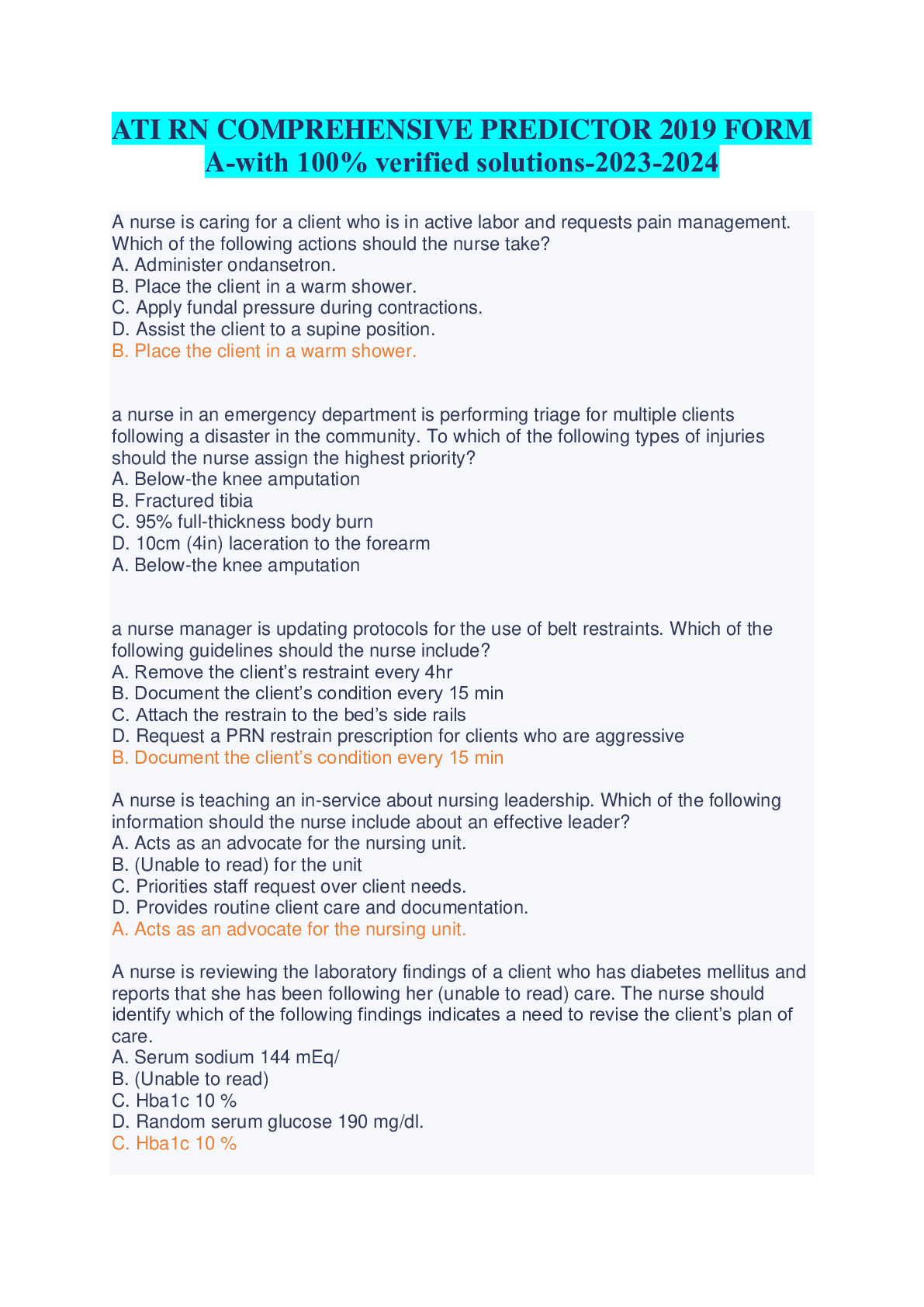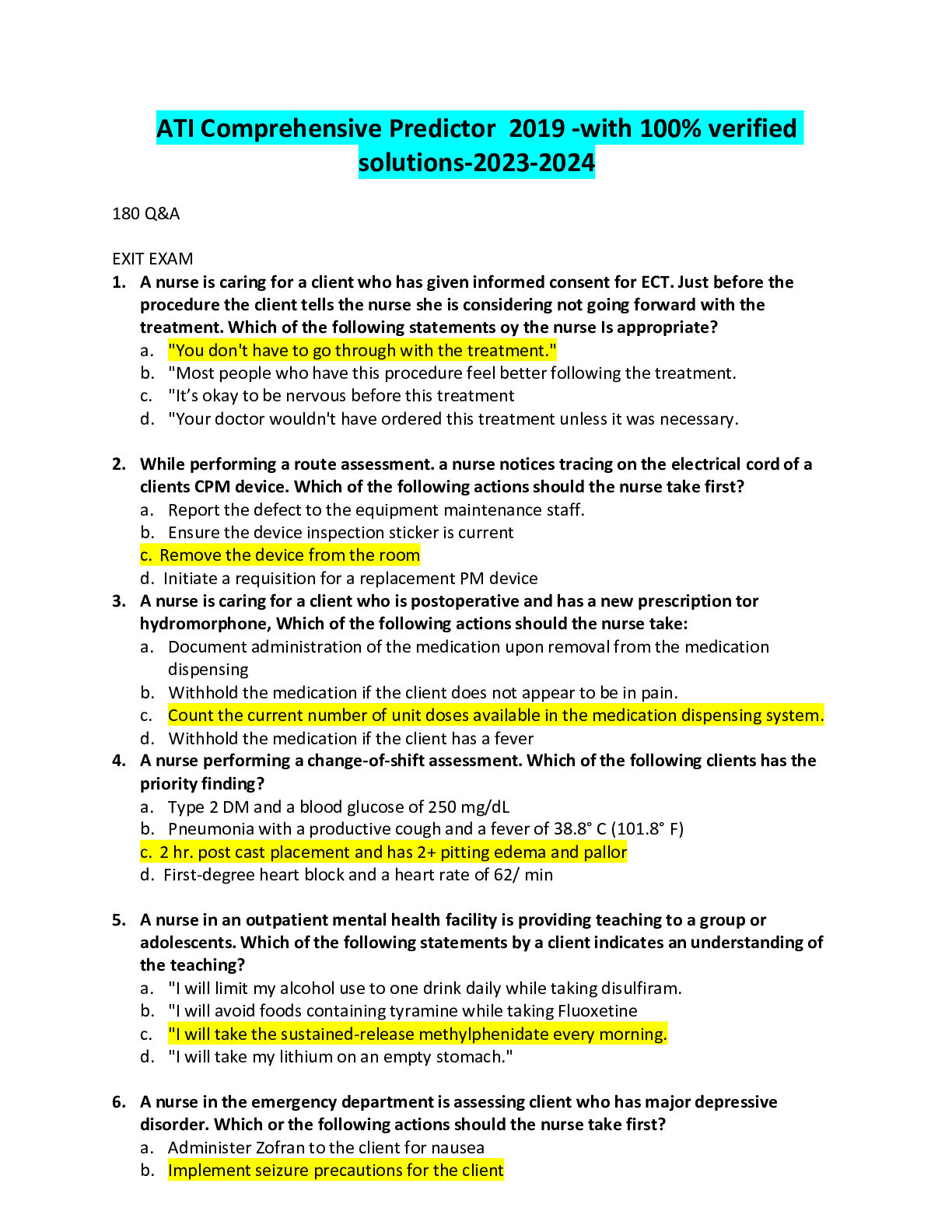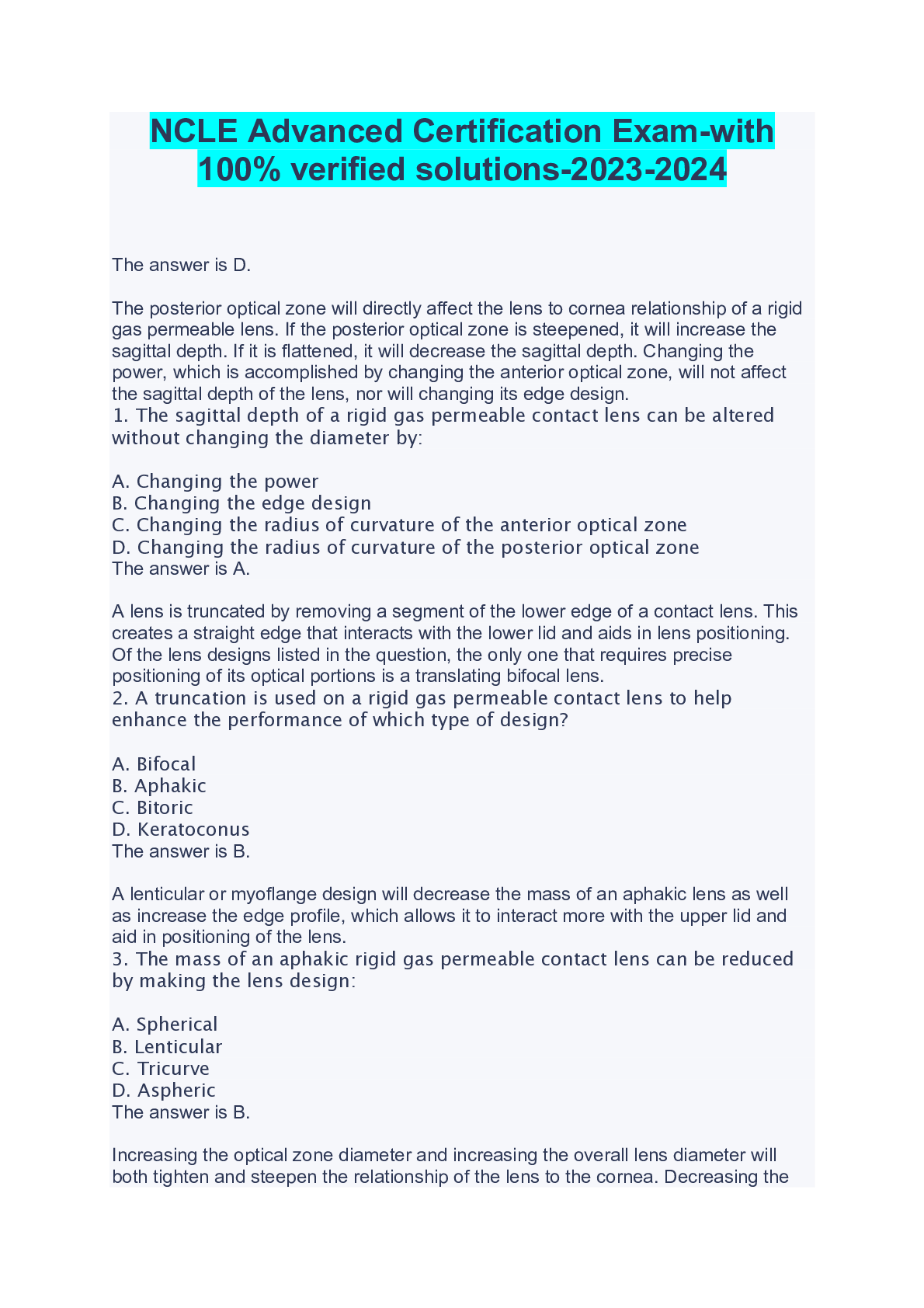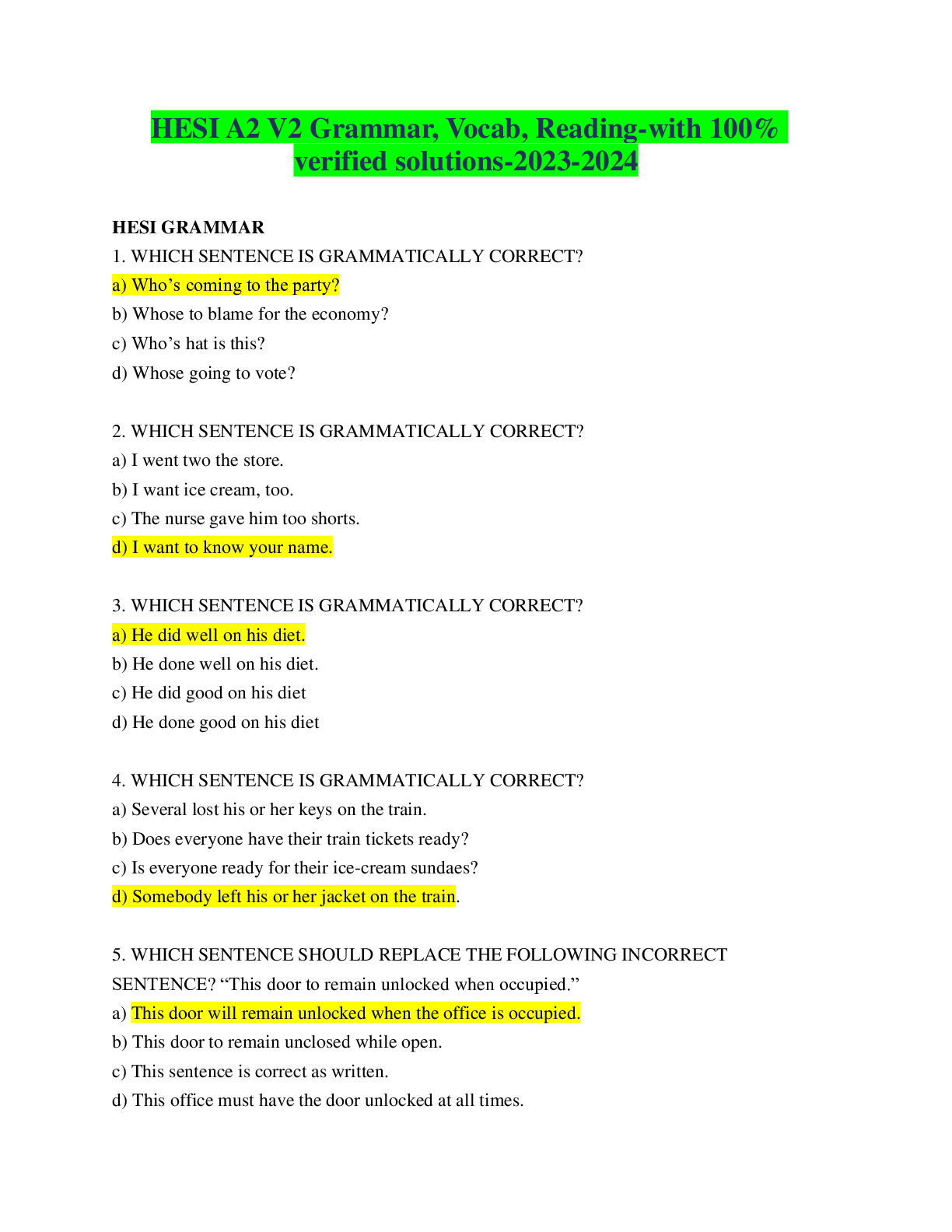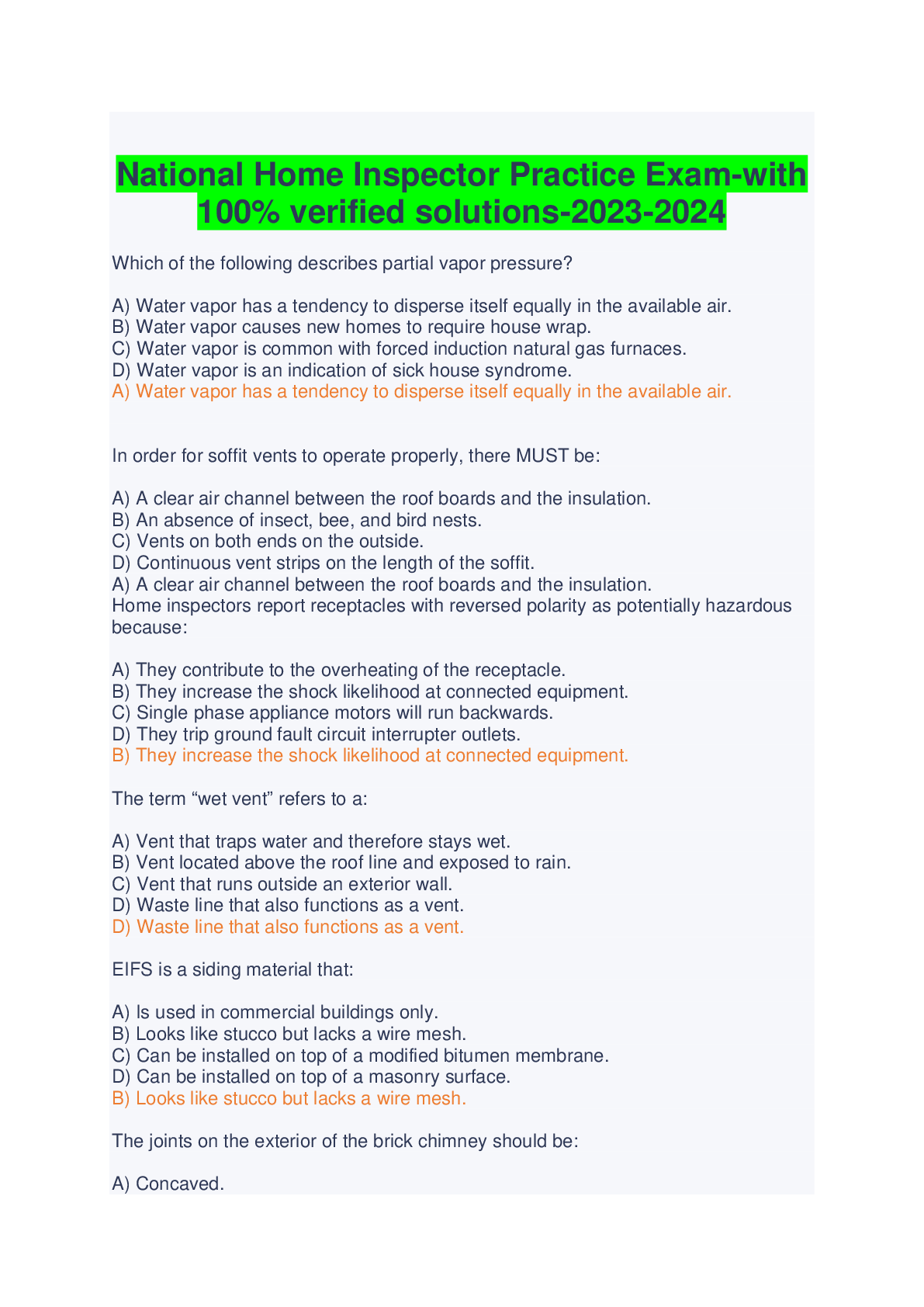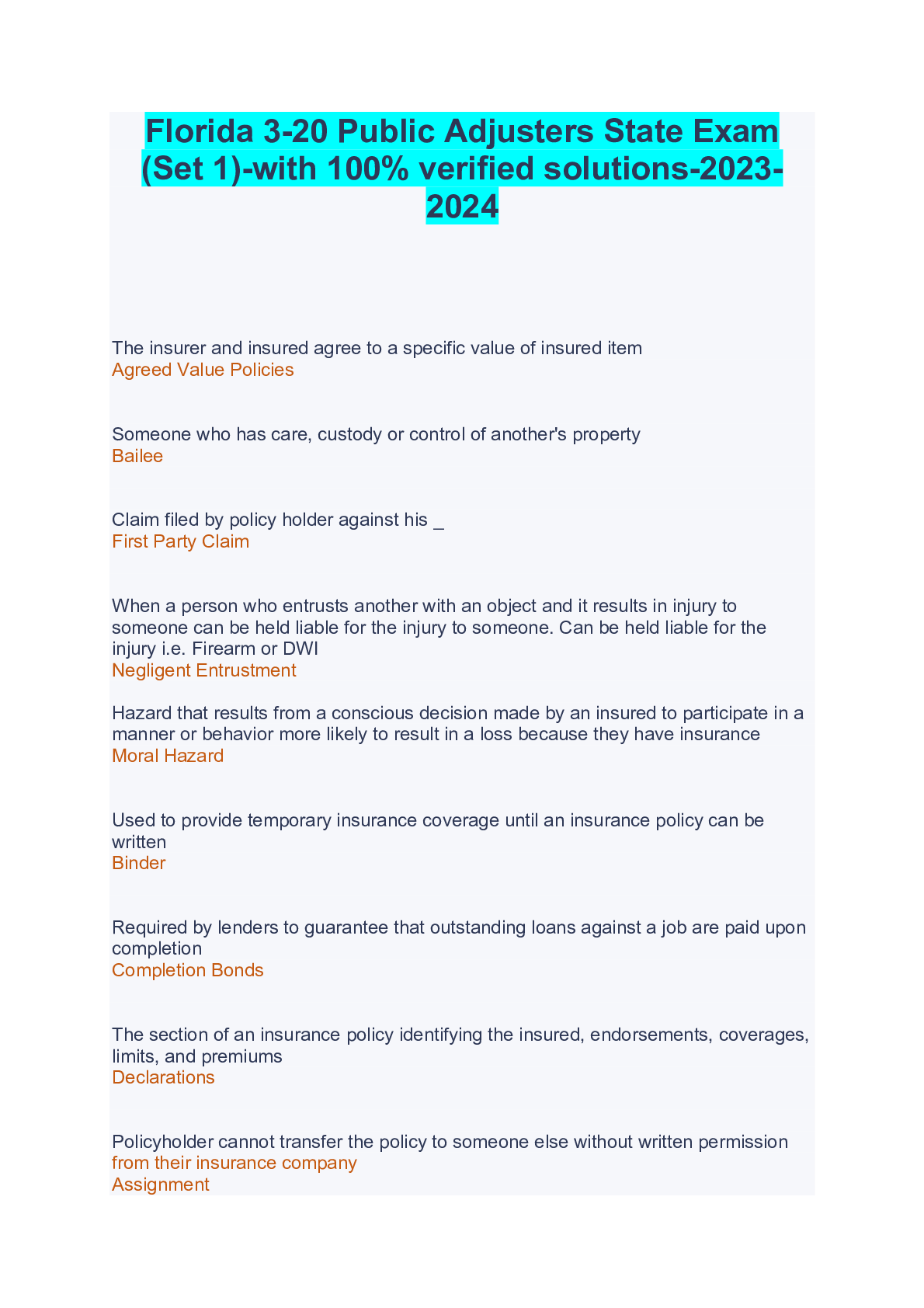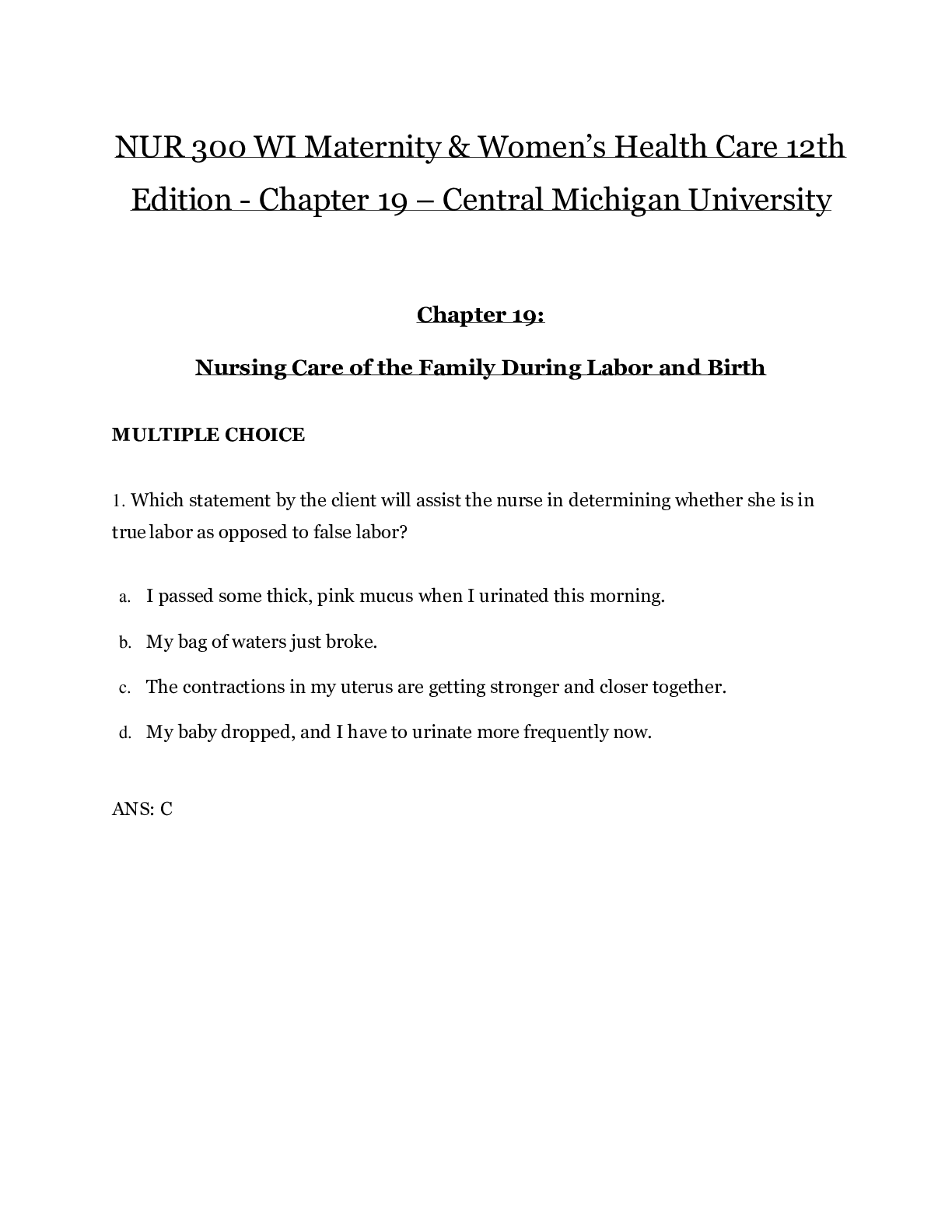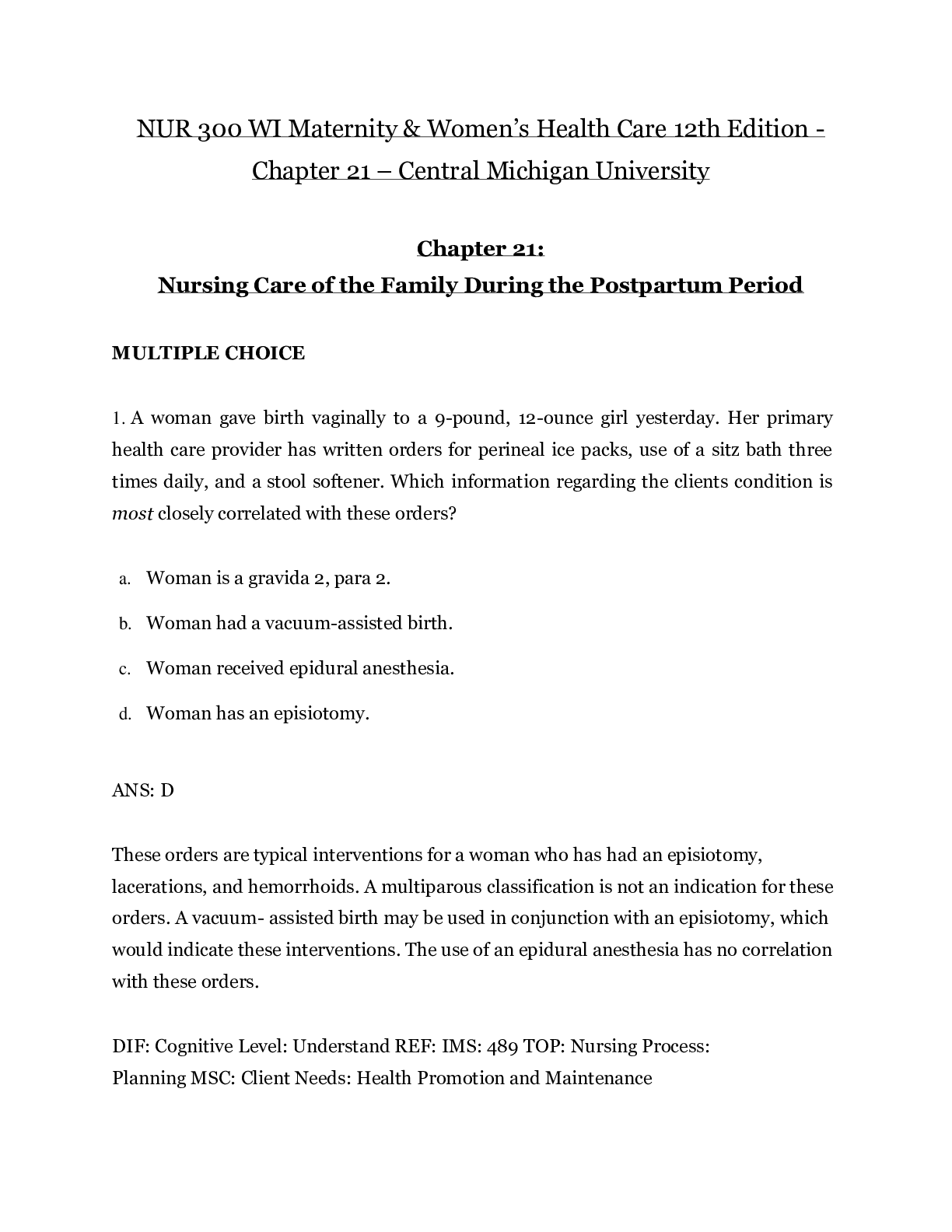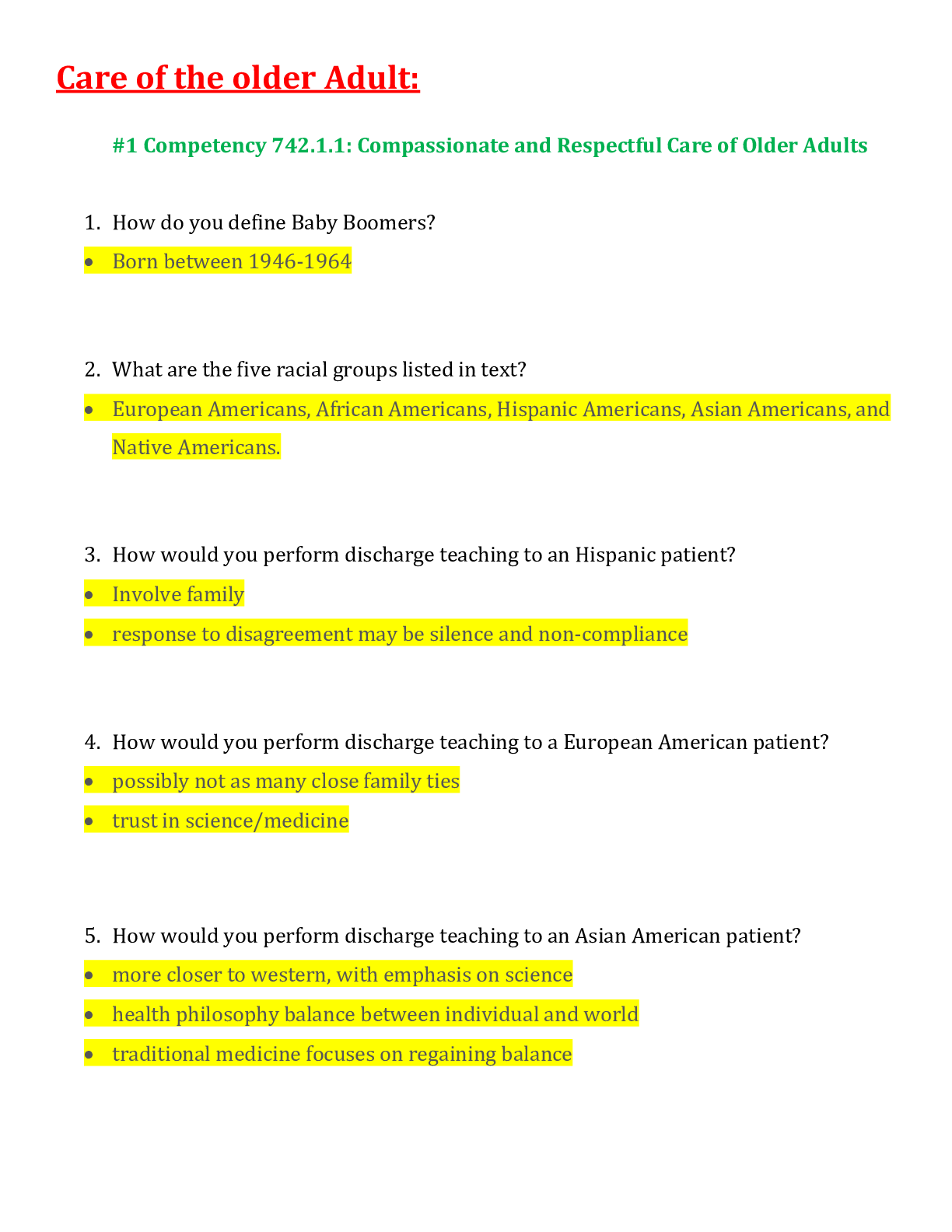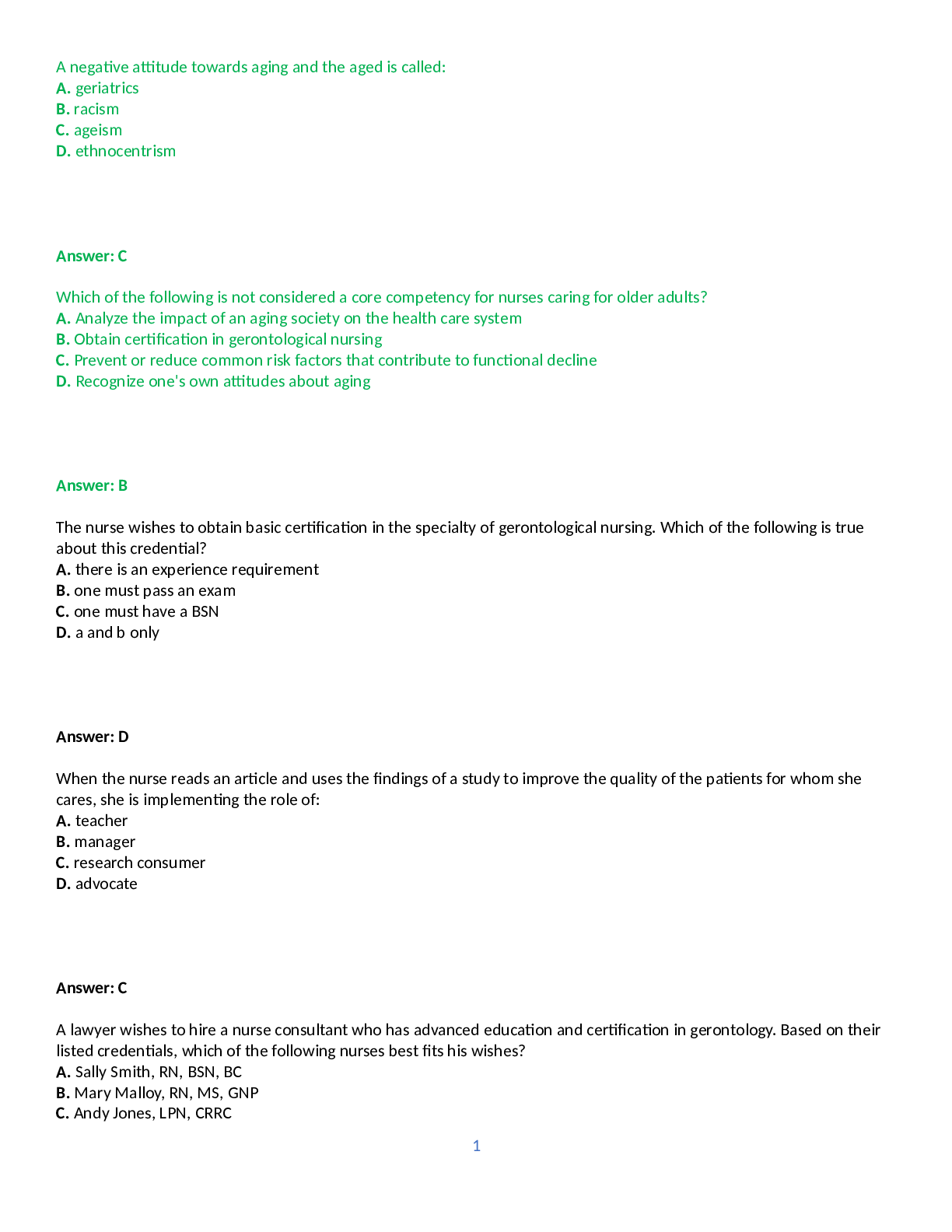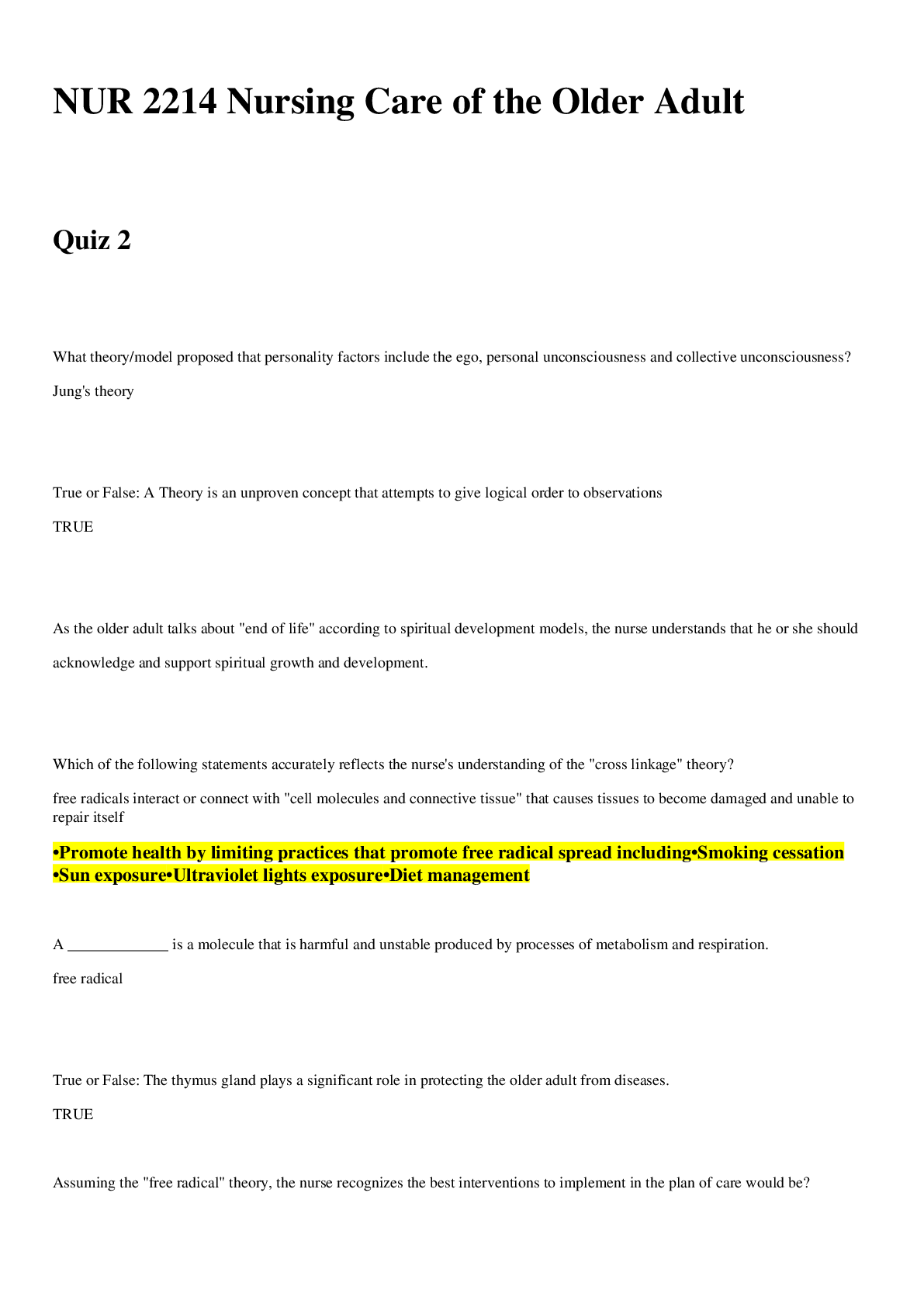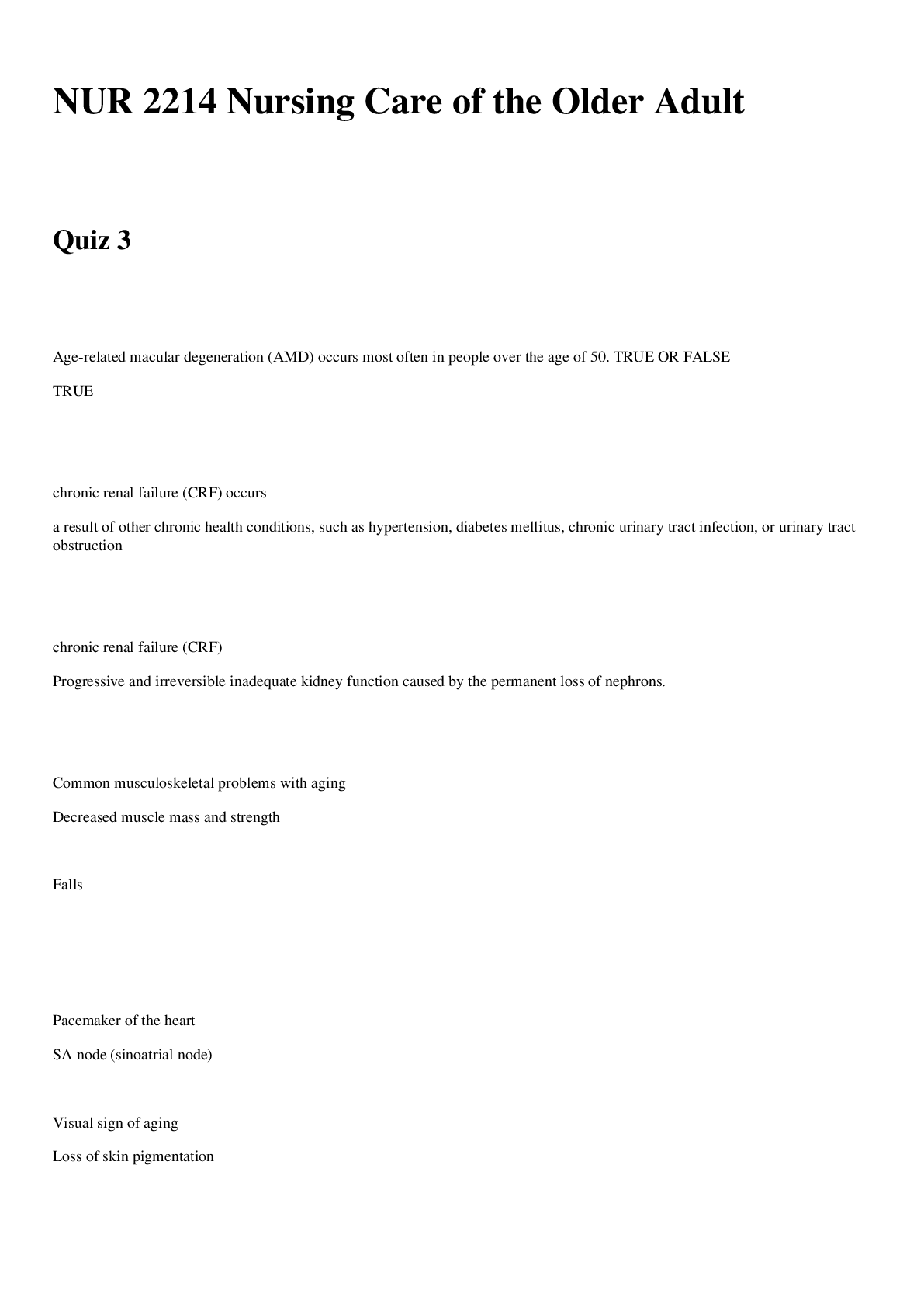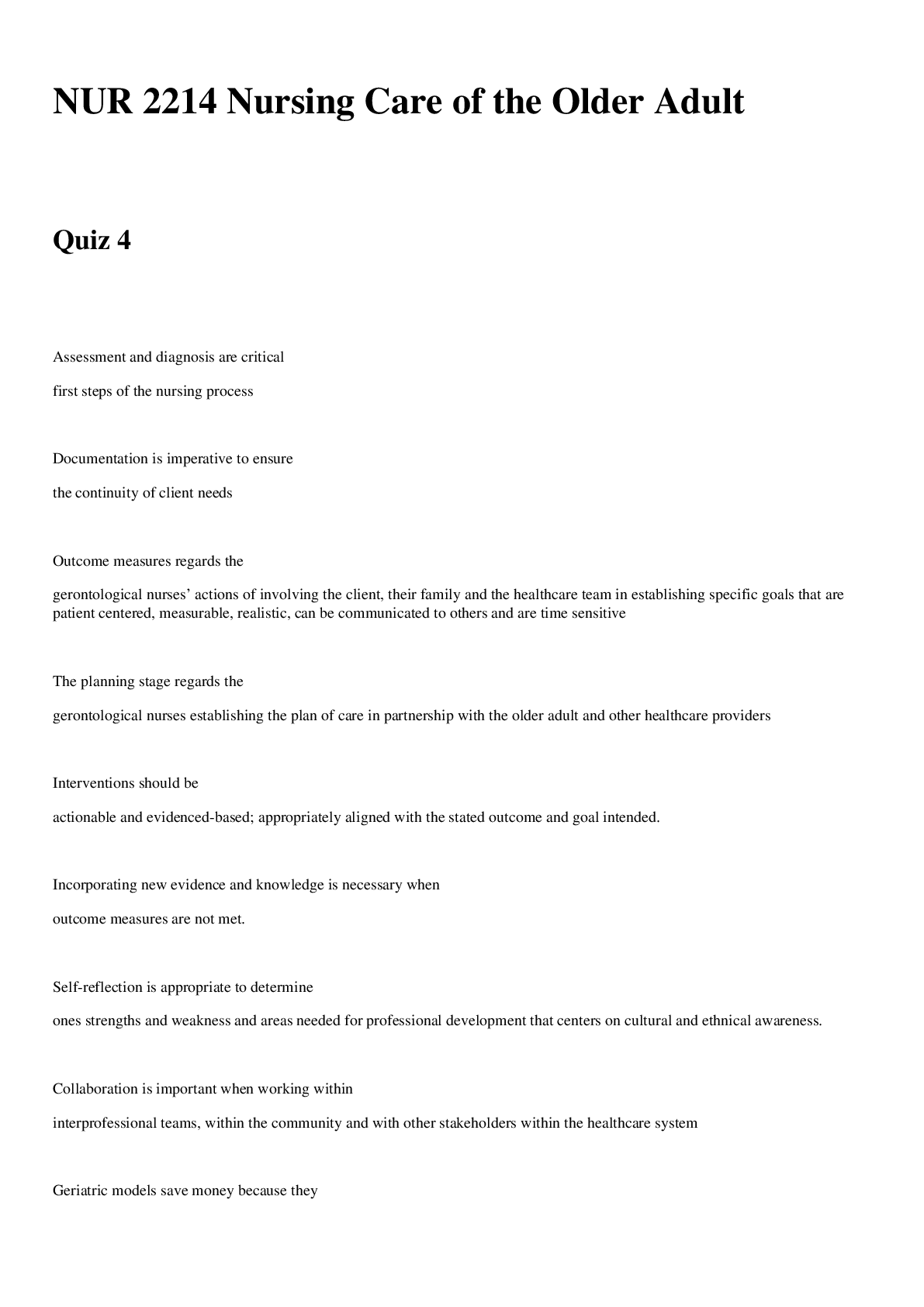*NURSING > EXAM > VN1105-Chapter 43: Care of the Patient with a Muscu- loskeletal Disorder- Nursing Test Banks-complet (All)
VN1105-Chapter 43: Care of the Patient with a Muscu- loskeletal Disorder- Nursing Test Banks-complete
Document Content and Description Below
Chapter 43: Care of the Patient with a Musculoskeletal Disorder Cooper and Gosnell: Foundations and Adult Health Nursing, 7th Edition MULTIPLE CHOICE 1. What is the movement of an extremity away from... the midline of the body called? a. Abduction b. Adduction c. Flexion d. Extension ANS: A Abduction is movement of an extremity away from the midline of the body. PTS: 1 DIF: Cognitive Level: Knowledge REF: Page 1339 OBJ: 6 TOP: Movements KEY: Nursing Process Step: Implementation MSC: NCLEX: Physiological Integrity 2. What is the large, fan-shaped muscle that covers the anterior chest from the sternum to the proximal end of the humerus and acts on the joint of the shoulder to flex, adduct, and rotate? a. Serratus anterior b. Intercostal c. Transversus abdominis d. Pectoralis major ANS: D Pectoralis major is the large, fan-shaped muscle that covers the anterior chest and is an adductor muscle, which will cause the shoulder to flex. PTS: 1 DIF: Cognitive Level: Knowledge REF: Page 1341, Figure 43-4 OBJ:4TOP:Muscle functions KEY: Nursing Process Step: Assessment MSC: NCLEX: Physiological Integrity 3. What should the nurse instruct the patient before a magnetic resonance imaging (MRI) procedure? a. Void to completely empty the bladder b. Omit all citrus food for 12 hours before the procedure c. Remove all metal, such as jewelry, glasses, and hair clips d. Wear only cotton garments for the procedure ANS: C MRI procedures require that the patient remove all metal because it will become magnetized. PTS: 1 DIF: Cognitive Level: Application REF: Page 1341 OBJ:7TOP:Diagnostic examinations KEY: Nursing Process Step: Assessment MSC: NCLEX: Physiological Integrity 4. The nurse instructs the patient who is to have a unicompartmental knee replacement that a major advantage of this partial knee replacement is that: a. the patient will be up and walking 2 to 3 hours after the operation. b. the kneecap is completely removed. c. the procedure is especially helpful in the treatment of rheumatoid arthritis. d. a small titanium disk replaces the worn cartilage. ANS: A Unicompartmental knee arthroplasty is also referred to as partial knee replacement in which the worn carti- lage is replaced with a plastic disk. It is not as invasive as a full knee replacement and does not disturb the kneecap so that the patient can be up and walking in 2 to 3 hours after surgery. It is not recommended for RA patients. PTS: 1 DIF: Cognitive Level: Comprehension REF: Page 1361 OBJ:13TOP:Unicompartmental knee replacement KEY:Nursing Process Step: Implementation MSC: NCLEX: Physiological Integrity 5.A patient who has had a right below the knee amputation continues to complain of unpleasant sensation in the right foot. What can the nurse explain about this “phantom pain”? a. It only exists in the mind. b. It is a complication following an amputation and can be clarified by the surgeon. c. It is related to the severed nerves that are still sending messages to the brain. d. It occurs when the person becomes focused on the loss of the limb. ANS: C Phantom pain (pain felt in the missing extremity as if it were still present) may occur and be frightening to the patient. Phantom pain occurs because the nerve tracts that register pain in the amputated area continue to send a message to the brain (this is normal). PTS: 1 DIF: Cognitive Level: Analysis REF: Page 1394 OBJ:21TOP:Phantom pain KEY:Nursing Process Step: Implementation MSC: NCLEX: Physiological Integrity 6.The patient that has a bipolar hip replacement following an intracapsular fracture has an order to be turned every 2 hours. The nurse understands that the correct nursing intervention is to keep the legs: a. together so they do not separate while turning. b. flexed to stabilize the prosthesis. c. abducted so the prosthesis does not become dislocated. d. adducted to prevent additional pain for the patient with turning. ANS: C Nursing interventions also involve postoperative maintenance of leg abduction by using an abduction splint for 7 to 10 days to prevent dislocation of the prosthesis. CONTINUED........ [Show More]
Last updated: 1 year ago
Preview 1 out of 28 pages
Instant download

Buy this document to get the full access instantly
Instant Download Access after purchase
Add to cartInstant download
Reviews( 0 )
Document information
Connected school, study & course
About the document
Uploaded On
Apr 28, 2022
Number of pages
28
Written in
Additional information
This document has been written for:
Uploaded
Apr 28, 2022
Downloads
0
Views
34



